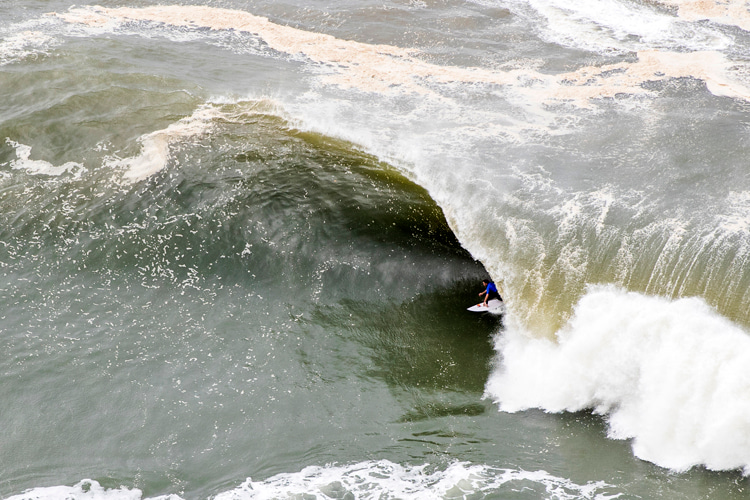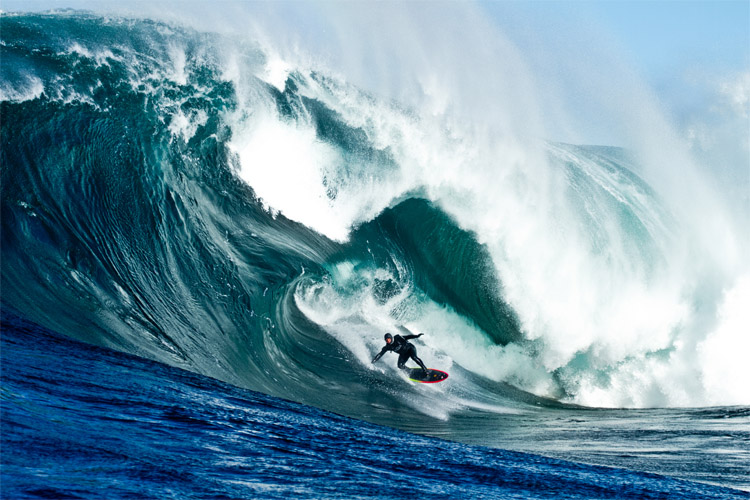How big is the largest wave you've ever surfed? Wave height is one thing; the weight of waves is quite another.
Getting pounded. We know how it hurts.
Whether we get caught on the inside or miss an unexpected wave set, it's always tough to feel the weight of the salted water on our heads and back.
When a wave breaks, it loses part of its energy. But until then, those liquid curtains will not wait for a rider's lucky escape to fall over the flats.
It's heavy stuff, no doubt about that. So, let's do some math.
According to physicists, a breaking wave can apply a pressure of between 250-6,000 pounds per square foot (1,220-29,294 kilograms per square meter), depending on its height.
Can you handle numbers like this? There are many variables involved:
- The salinity of the water (the world's average is 3.5 percent);
- The height, thickness, and width of the falling lip;
- The winds involved in the equation;
- The traveling speed of the wave, etc.;
Although the human body will not literally "feel" those massive numbers, it will definitely feel something.
Big waves are undoubtedly heavy.

1,000 Liters Equals 1,000 Kilograms
To get an overall weight for your specific wave, you can roughly memorize that a cubic meter of water (1,000 liters) weighs one metric tonne (1,000 kilograms).
How about that?
For example, a 33-foot (10 meters) wave with a falling lip that is 66 feet (20 meters) wide will mean that, if you wipe out, you'll feel the equivalent of 410 tonnes (410,000 kilograms) over your body.
That's the weight of 488 Volkswagen Beetles (1967 model)!
Another example from the average surfer's perspective: imagine a 20-inch (50 centimeters) thick wave lip, only 3.2 feet wide, in a summer three-foot wave.
Total weight? Solid 500 kilograms (1,100 pounds).
The weight of a wave lip can be tremendous. So make sure your duck diving skills are up to scratch.
Protect your head and your back, too, because obtaining oxygen will almost feel like a secondary need under such weight.
Discover the four types of breaking waves.
